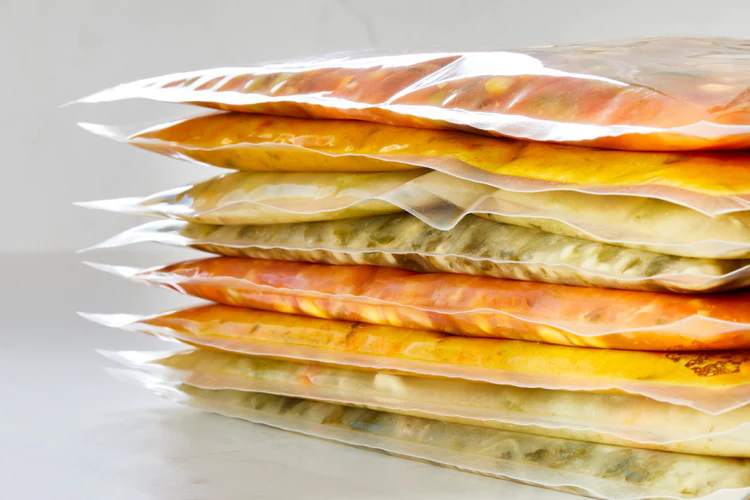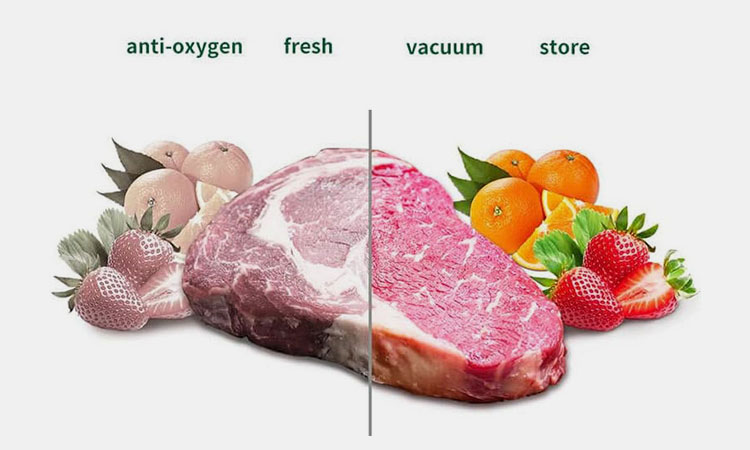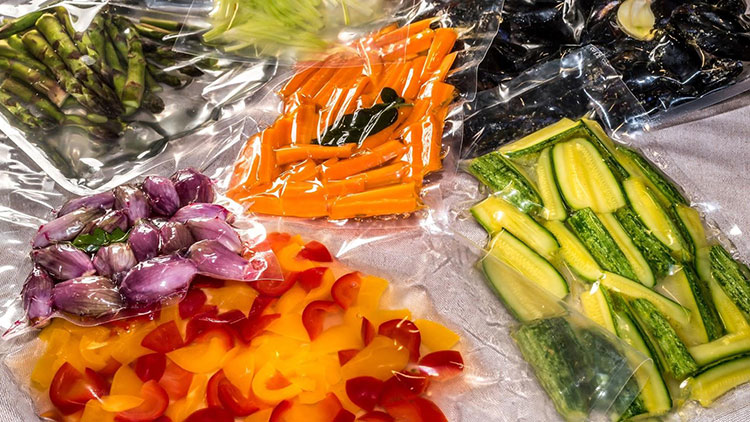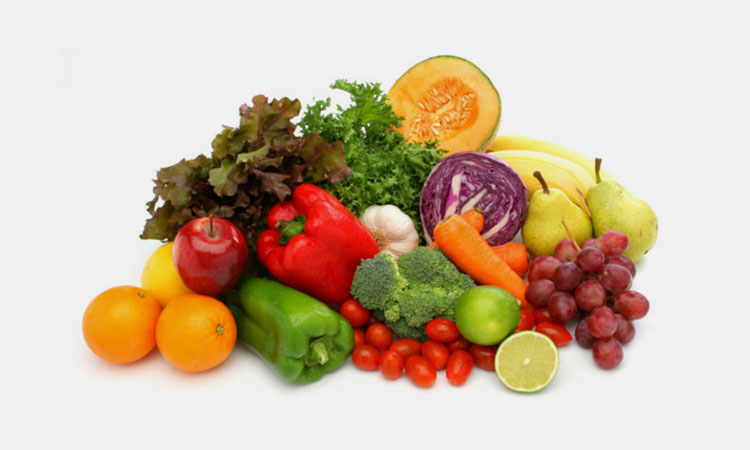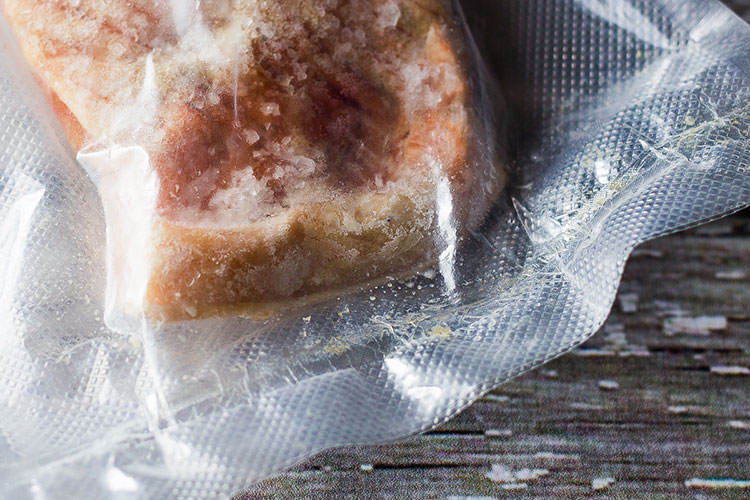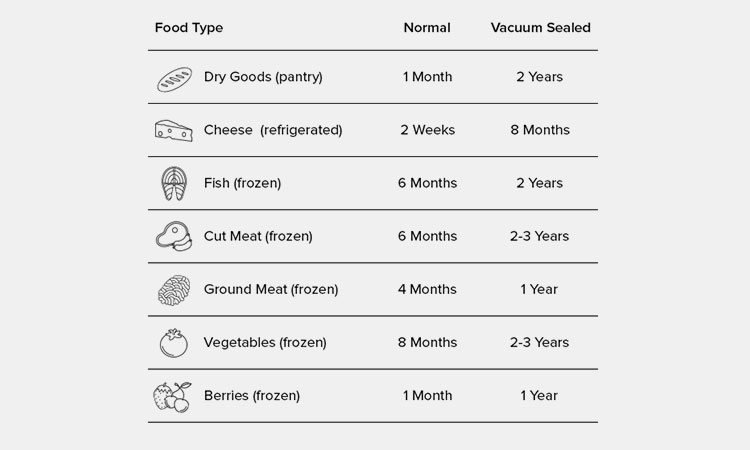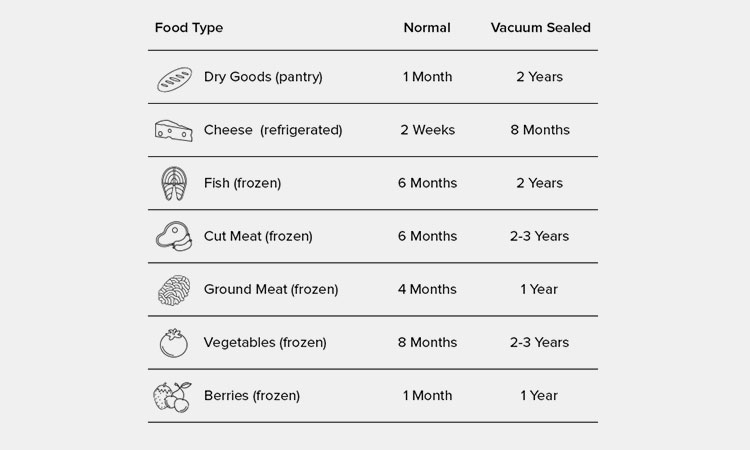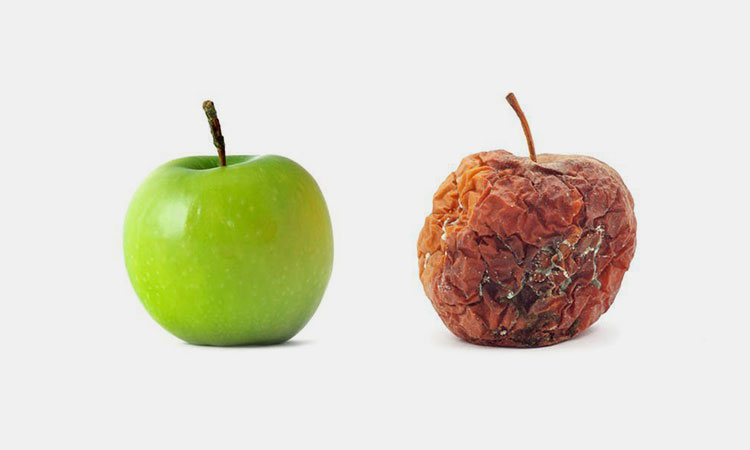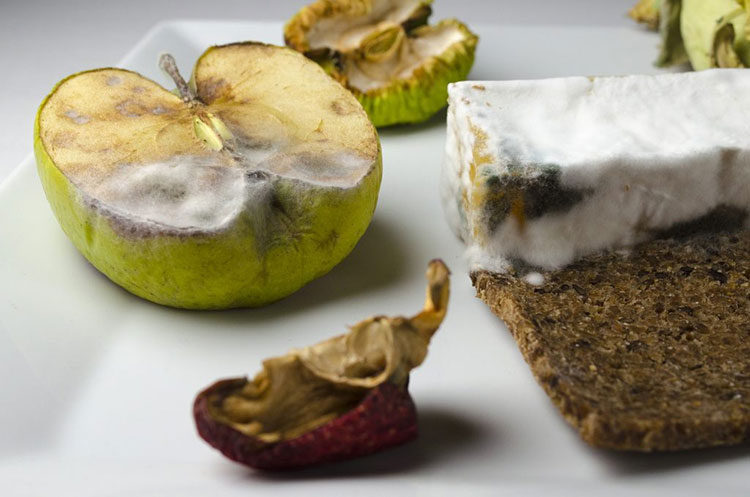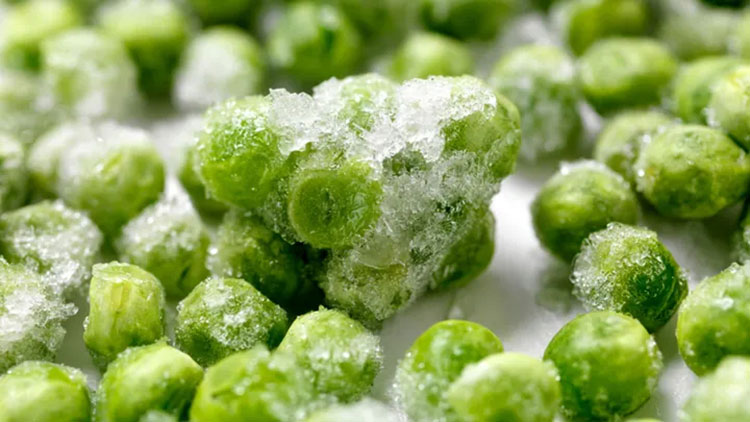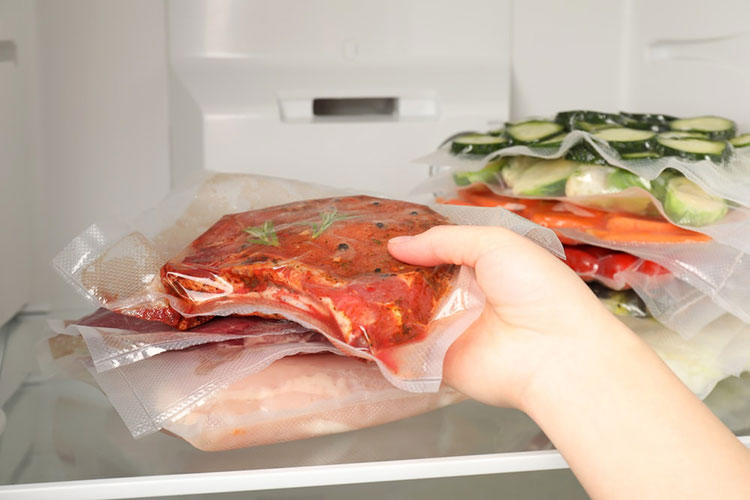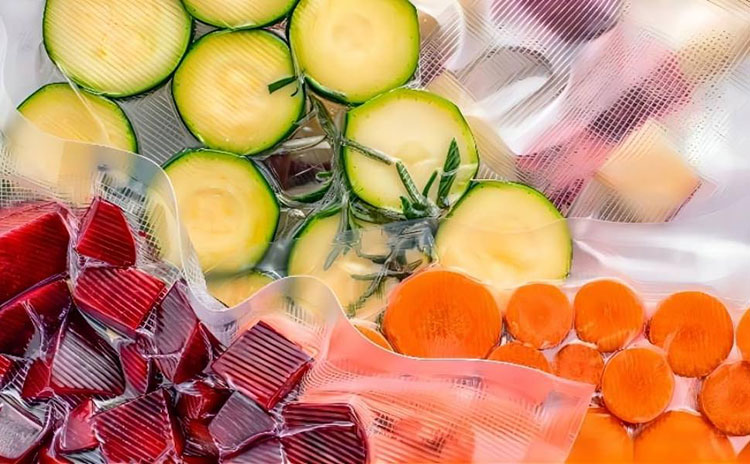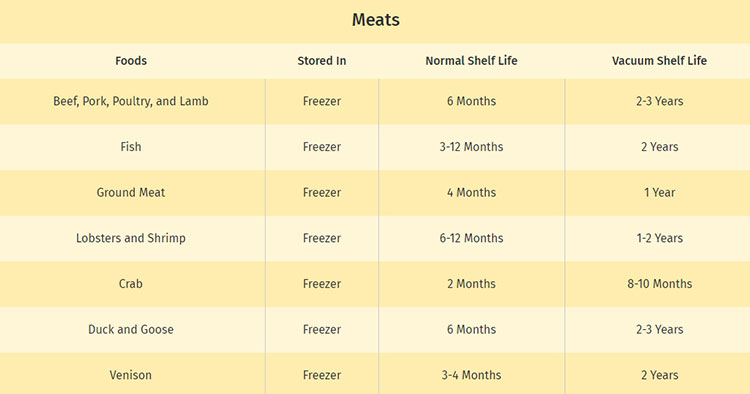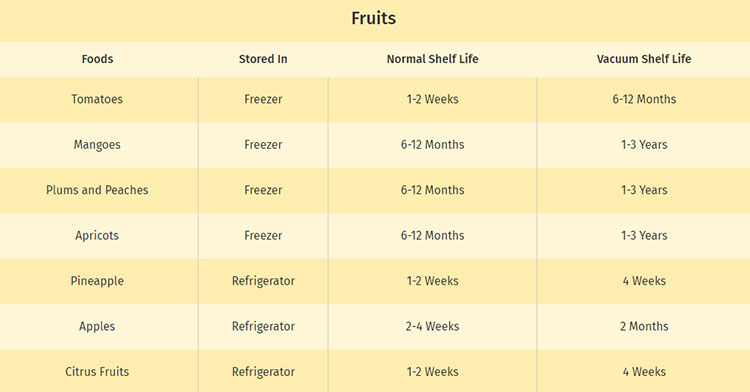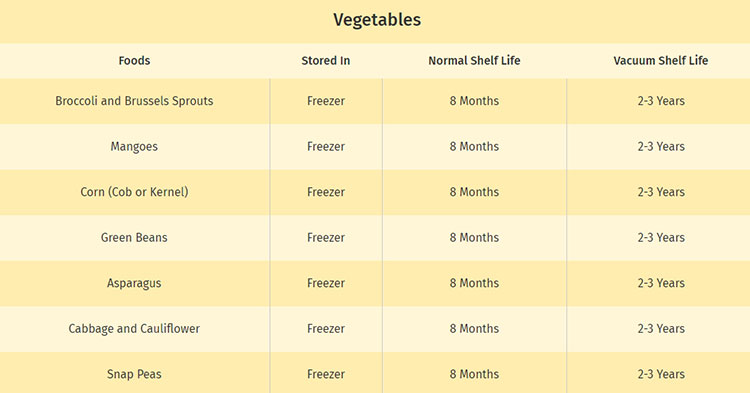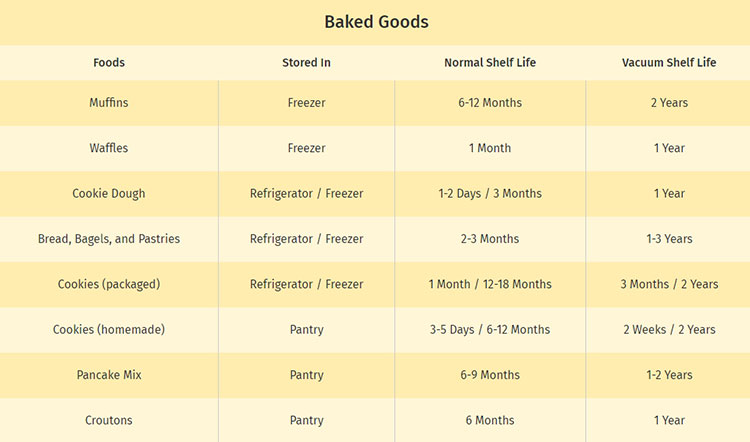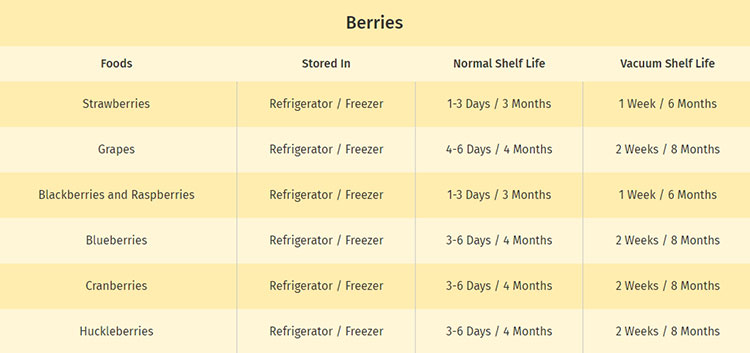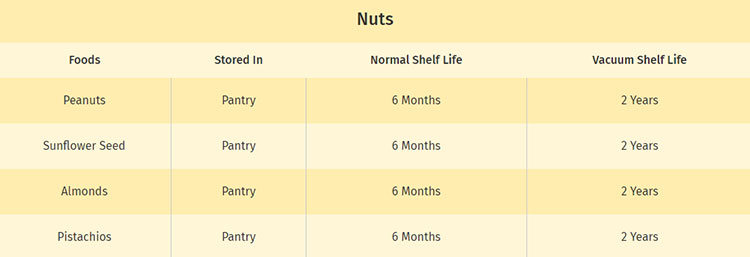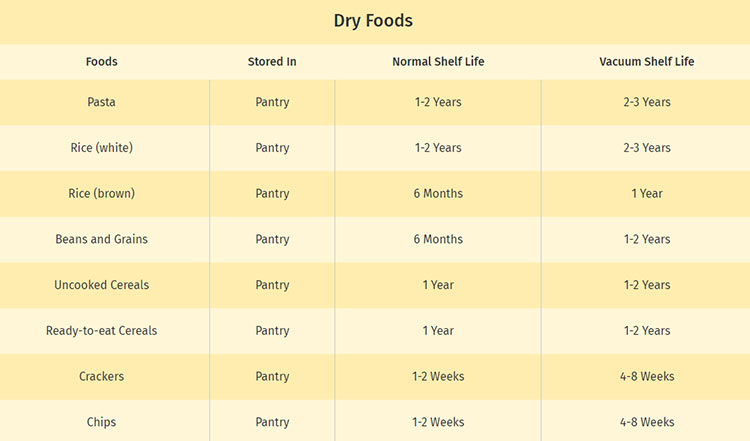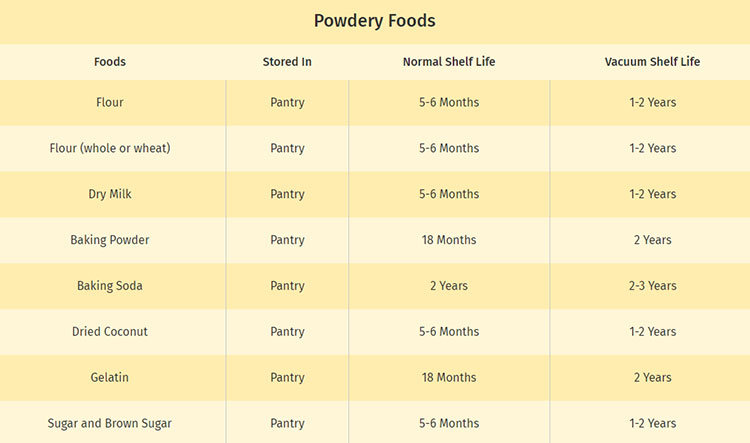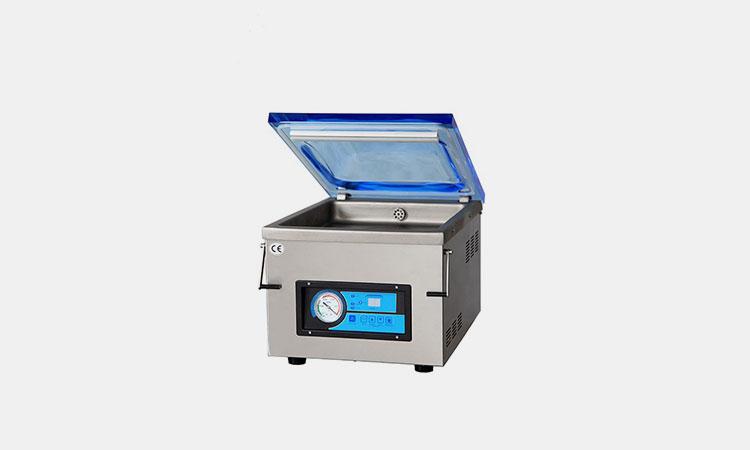Vacuum Sealed Food Shelf Life Chart
The purpose of food to be vacuum sealed is to extend the food shelf life and keep their freshness. In order to preserve the freshness and extend the shelf life for food as long as possible, manufacturers will adopt different packaging packages and methods. However, there are other ways to extend the food shelf life even further - vacuum sealing. Vacuum sealing can remove all the air in the item and can effectively prevent the growth of bacteria. But how long do vacuum-sealed foods last? Here, we are offering you the vacuum sealed food shelf life chart. Just keep reading!
1. What Is Food Vacuum Sealing?
Food vacuum sealing refers to the application of vacuum sealers in the food packaging industry. In order to reduce the spoilage of food due to being placed in the refrigerator or in the air, vacuum packaging pumps out all the air in the packaging bag to achieve a certain vacuum state in the food bag, so that the food can have a longer shelf life.
2. What Is The Shelf Life Of Vacuum Sealed Food?
How long can vacuum-sealed food last? What is the difference between the shelf life of vacuum-sealed storage, pantry storage, and refrigerator storage? If foods stored in vacuum seal bags last longer than other ways, how long are they supposed to last?
Shelf Life Of Vacuum Sealed Food
The shelf life of vacuum-sealed food refers to the corresponding shelf life of the food in the state of vacuum packaging and using different storage methods. There are three general food storage methods, pantry storage, refrigerator storage, and freezer storage. At the same time, the food after positive empty packaging should also adopt these three different storage methods according to the standards.
Vacuum Sealed Food Storage
Even if the food has been packaged, it does not mean that all of them can be kept fresh through pantry storage. They also need to adopt different storage methods according to their species. For example, fresh meat, after being vacuum-packed, also needs to be kept frozen; or fresh vegetables, after being vacuum-packed, must also be refrigerated and kept fresh.
The Factors Influence Shelf Life Of Vacuum Sealed Food
According to relevant research information, there are several factors that affect the shelf life of food vacuum packaging:
Initial Freshness
The initial freshness of food is very important. Food vacuum sealing is just a means of preserving food, it does not make stale food fresh through this packaging method. Therefore, for fresh raw foods, vacuum sealing should be performed immediately. This can basically ensure that the shelf life of food is extended by about 5 times. For finished or semi-finished products that have been heated, the food needs to be vacuum-packed immediately before the food is cooled. Then put it in the refrigerator to chill.
Improper Vacuum Sealing
If you have not sealed the opening tightly or leaked air during the process of vacuum packaging the food. This method will also affect the effect of vacuum packaging. Because, this will cause oxygen intrusion in the packaging, which will breed bacteria.
3. What Is Vacuum Sealed Food Shelf Life Chart?
The vacuum sealed food shelf life chart can provide you with the complete shelf life of food vacuum sealing. There is also the shelf life of food without vacuum sealing for comparison. In this way, you can clearly understand why food is more beneficial and more convenient after vacuum sealing.
Vacuum Sealed Food Shelf Life Chart -photo credits: webstaurantstore
Different foods may use different vacuum sealed food shelf life charts. Because different foods may be stored in different ways. For example, products like meat must be vacuum sealed and frozen. Vegetables need to be vacuum sealed and then kept fresh in the refrigerator. Nuts and dry food need to be vacuum sealed and pantry stored.
4. How To Understand The Vacuum Sealed Food Shelf Life Chart?
Understanding the shelf life chart for vacuum-sealed foods is very simple. You only need to pay attention to the following information: food type, storage method (pantry, refrigerator, freezer), normal shelf life, and vacuum sealed shelf life.
Vacuum Sealed Food Shelf Life Chart -photo credits: webstaurantstore
According to the chart above you can know:
① Dry foods are suitably stored in the pantry, and the vacuum sealed shelf life is 24 times the normal storage time.
② For foods that need to be stored refrigerated like cheese, the vacuum sealed shelf life is about 16 times that of normal storage methods.
③ For foods that need to be stored frozen like fish, meat, and vegetables, the vacuum sealed shelf life is 6 times the normal storage time.
5. Why Food Need To Be Vacuum Sealed?
There are many disadvantages of normal food preservation, and there are many advantages of food preservation in vacuum sealing.
Disadvantages of normal food preservation:
Short Shelf Life
Although now with the development of technology and the continuous updating of refrigerators, it is impossible to keep food fresh and shelf life longer. Perishable foods like fruits and vegetables only have a shelf life of a few weeks in the refrigerator.
Bacterial Growth
The essential elements for bacterial growth are moisture and oxygen. In addition to vacuum sealing, whether it is fresh or frozen, this problem cannot be eliminated. Especially half-cooked or fully-cooked foods, or fruits that have been peeled, as long as they are kept fresh, bacteria will start to breed.
Freezing Burns
Many foods like green beans, vegetables, or fresh meat will cause freezing burns if they are kept in the freezer for a long time. This damage is essential over time. This will not only affect the taste of food but also endanger health and cause food waste.
Advantages of food vacuum sealing:
Extend Shelf Life
Vacuum sealing can greatly increase the shelf life of food. This can be seen through the food shelf life table.
Anti-bacterial
Vacuum packaging can prevent or slow down the growth of bacteria. Because vacuum packaging can isolate the oxygen needed for bacterial growth.
Keep Food Quality
Vacuum sealing can lock the moisture of food. It is not conducive to the volatilization of food moisture, and without the oxidation of oxygen, the food can keep fresh for a long time.
6. What Are The Shelf Life Chart For Different Vacuum Sealed Food?
The vacuum sealed food shelf life chart is different for different foods. Below we provide you with the vacuum sealed food shelf life chart of 9 major categories for your reference.
Shelf Life of Meats
Shelf Life of Meats -photo credits: outofair
Meat is special, and any meat needs to be stored in the freezer. Because meat is rich in protein and perishable. From the shelf life chart of meats, the shelf life of meat by vacuum sealing is extended by about 5-6 times.
In order to maximize the shelf life of meat, you need to immediately vacuum sealing processed or temporarily unnecessary meat when you buy it, and then freeze it for storage.
Shelf Life of Fruits
Shelf Life of Fruits -photo credits: outofair
From the shelf life chart of fruits, the shelf life of fruits by vacuum sealing is extended by about 15-16 times.
The biggest difficulty in fruit storage is that it loses water quickly and is easy to breed bacteria. After vacuum sealing, such problems can be well resolved.
Shelf Life of Vegetables
Shelf Life of Vegetables -photo credits: outofair
From the shelf life chart of vegetables, the shelf life of vegetables by vacuum sealing is extended by about 4.5 times.
Whether you purchase or grow your own vegetables, vacuum sealing can preserve the nutrients of vegetables to the greatest extent.
Shelf Life of Cheeses
Shelf Life of Cheeses -photo credits: outofair
The shelf life of cheese by vacuum sealing is extended by about 12 times.
Cheese is rich in protein and minerals. Vacuum sealing can maintain its freshness to a greater extent.
Shelf Life of Baked Goods
Shelf Life of Baked Goods -photo credits: outofair
The shelf life of baked goods by vacuum sealing is extended by about 12 times.
In order to minimize waste, vacuum sealing can provide you with convenient plastic sealing, and is not easy to oxidize.
Shelf Life of Berries
Shelf Life of Berries -photo credits: outofair
The shelf life of berries by vacuum sealing is extended by about 24 times.
The vacuum sealing of berries allows you to enjoy fresh berries even when the berries are not ripe.
Shelf Life of Nuts
Shelf Life of Nuts -photo credits: outofair
Storing in the pantry, the shelf life of nuts by vacuum sealing is extended by about 4 times.
The vacuum sealing of nuts protects them from oxygen and moisture.
Shelf Life of Dry Foods
Shelf Life of Dry Foods -photo credits: outofair
Storing in the pantry, the shelf life of dry fruits by vacuum sealing is extended by about 2-3 times.
Vacuum sealing of dry fruits protects them from bugs.
Shelf Life of Powdery Foods
Shelf Life of Powdery Foods -photo credits: outofair
Vacuum sealing of powdery foods protects them from hardening and caking.
Storing in the pantry, the shelf life of powdery foods by vacuum sealing is extended by about 4-5 times.
Conclusion:
From this guide, do you know how to read and understand the vacuum sealed shelf life chart from now on? Though the vacuum sealers can bring you plenty of benefits including extending the food shelf life. However, different types of vacuum sealers may have different functions and effects. If you want to know more about vacuum sealed food shelf life or different vacuum sealers, do not wait to contact us or visit our official websites: https://www.allpackchina.com/. Thanks for reading!
Don't forget to share this post!
CONTACT US
Tell us your raw material and project budget to get quotations within 24 hours.
WhatsApp Us: +86 181 7101 8586
The Buyer's Guide
Tell us your material or budget, we'll reply you ASAP within 24 hours

